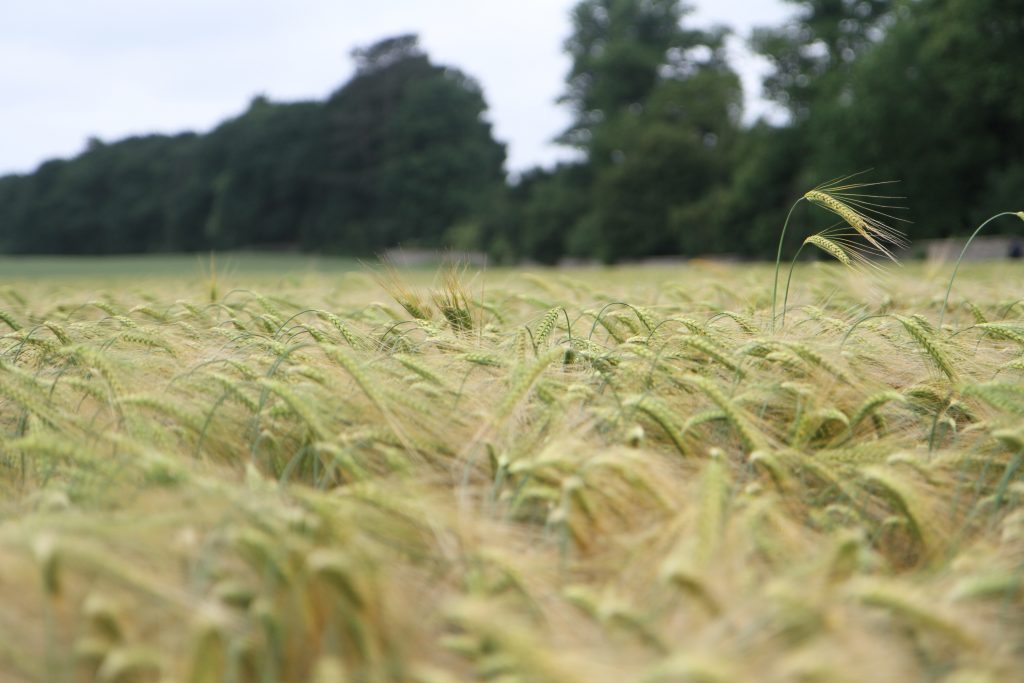Spring barley strategy key to malting quality
10th March 2017
After poor winter barley yields, the scene is set for spring barley to rise in popularity. This means growers will be thinking about establishment strategies, fungicide programmes, and how to deal with the challenges ahead.
After poor winter barley yields, the scene is set for spring barley to rise in popularity. This means growers will be thinking about establishment strategies, fungicide programmes, and how to deal with the challenges ahead. But as well as the usual pests and diseases, Doug Pickup, Farm Manager at Sentry, has to deal with a slightly more unconventional threat on one of the North Norfolk farms he manages.

Doug Pickup.
“One of the disadvantages of North Norfolk is that there’s a lot of marshland because of the coast,” Mr Pickup notes, “And that means there’s quite a large geese population. The geese come from the marshland and graze on the cereal crops.”
This is where spring barley comes in. With varieties such as Odyssey and Concerto, Mr Pickup has to ensure that what’s good for the goose doesn’t end up being bad for the manager.
“If you reduce the length of time the crop is in the ground, it is less exposed to the geese. If the winter crop goes in in September, that gives them a long time to graze. But if the spring crop goes in in January or February, they’ve got nothing to graze on until it comes up late February or early March.”
Of course, deterring geese isn’t the only reason to grow spring barley. As Simon Hobbs, Seed Manager – North Anglia at Agrii, points out, the crop has myriad other benefits: “The premiums on offer are very attractive, it’s not a hugely expensive crop to grow, and it’s more competitive than spring wheat when it comes to suppressing black-grass.”
In 2017, three farms under Mr Pickup’s management will be growing barley, with a total of 165 hectares of spring barley and 274 hectares of winter barley. The spring barley is all grown for malting, with malting premiums making it an important crop in the region.
“We grow for malting, not for feed, as the bonuses can add up to £7.50 per tonne,” says Mr Pickup, “That’s a no-brainer. And when you combine spring barley with winter barley and sugar beet in a two-year cycle, the combined output is so good.
“Spring barley has always been a consistent margin earner. It enhances the value of the sugar beet crop because you can leave it in the ground longer, maximising any potential growth. You don’t need to lift it until December or even January, so you can push for yields, then turn it around straight away and put it into spring barley.”
Light and heavy
Growing low nitrogen malting barley in Norfolk has a long tradition, thanks to its lighter soils, but in recent years the crop is finding more popularity elsewhere too. Mr Hobbs explains: “Norfolk has always had a long history of growing spring barley, but in the past three or four years, with the three-crop rule and increasing black-grass issues, greater numbers of heavier land farmers are going into growing spring barley. Different approaches are needed on heavy land, but the principles will be the same: using a thorough, comprehensive and carefully planned strategy to grow the crop efficiently and profitably.”
That doesn’t mean that growing on light land isn’t without its own problems, of course. Mr Hobbs continues: “Growing in Norfolk means you can drill early, and that’s important as you need to get in early ahead of any potential drought. A dry March or April could be a disaster, as the moisture in light land can disappear quickly. So getting the drilling timing right is critical.”
Mr Pickup adds: “Every year is different, and the weather has a huge influence on the quality of the barley you grow in terms of yield, nitrogen, screenings and germination. Every year throws up different problems, so you need to be prepared and have good programmes and strategies in place in order to give yourself the best chance.”
Treating the crop right
When it comes to seed treatment, Mr Pickup admits that slightly less decision-making is required than in other areas of his farm management:
“Raxil Star [prothioconazole, tebuconazole and fluopyram] has been around for years, and I’ve never had to look for anything else, since it covers pretty much all the seed-borne diseases. We treat all our barley with Raxil Star, and I don’t have any reason to think that there’s anything better out there.
“Any spring crop needs to go in and get going – it doesn’t want to hang about. So anything that’s going to encourage that has got to be right. We’re able to drill earlier than most due to our soil type, and January drilling is not uncommon, although the bulk of it goes in in February.”
Mr Hobbs agrees that seed treatment is key: “You should make sure you consider what seed treatments do, and be looking for the best possible product to give you the best possible start. We always recommend investing in the best available seed treatment and Raxil Star is the one for barley, rather than some of the cheaper dressings. Also consider additional treatments such as manganese and Take Off to boost crop establishment and health, which have been proven to increase yields.”
With a robust fungicide programme alongside this seed treatment, Mr Pickup can keep on top of the diseases. This helps protect his yields, and allows him to focus on ensuring that his barley meets the high quality requirements necessary to qualify for malting.
“We usually achieve between 5.8 and 6.8 tonnes per hectare – that’s a pretty normal range,” Mr Pickup says, “It never really drops below 5.5, but it’s been up to 9 in recent times. Four years ago, we were cutting spring barley at 9 tonnes per hectare, it was unbelievable!
“We have a contract with H Banham, based in Fakenham. The quality specification is set out – we grow for a nitrogen specification. Low nitrogen, generally below 165, attracts a better premium for us, as do low screenings. With the bonuses on offer, it’s important that we achieve the best possible quality.”
All in all, Mr Pickup’s approach has been a success, in spite of the nearby geese threat: “I can’t remember when we last had a rejection for spring barley, it’s been so many years. We don’t get rejected!”

